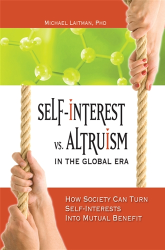The Ari – The Greatest Creative Force of the Renaissance
Preceding every new stage in the evolution of desires, the appropriate precursor appears. First, there was Abraham; he was the Root. Then there was Moses, representing Stage one, followed by Rabbi Shimon Bar-Yochai (Rashbi), who corresponds to Stage Two. And now the time has come for Stage Three.
The emergence of Stage Three in the evolution of desires roughly corresponds to the advent of the Renaissance in Europe. Its harbinger was the greatest Kabbalist since Rashbi: Isaac Luria (the Ari)—founder of the Lurianic Kabbalah, the most systematic and structured school of Kabbalah. Today, it is the predominant teaching method, thanks to the 20th century commentaries of Baal HaSulam, who interpreted the writings and adapted them to the scientific/academic mindset of the 20th and 21st centuries.
Despite his short life, the Ari (1534-1572) produced numerous texts with the help of his prime disciple, Rav Chaim Vital. The Ari did not write his texts by himself. Instead, he would speak and Chaim Vital would write down his words.
After the Ari’s early demise, Vital and several of his relatives compiled the Ari’s words into cohesive texts. for this reason, many scholars have ascribed the Ari’s writings to Chaim Vital and not to his teacher. Yet, even though Vital was the scribe, the provider of the information is undisputedly the Ari.
How the Ari Reformed the Wisdom of Kabbalah
In Stage Three there is an “inverted” modus operandi, where the act is reception but the intention is to give. This was true for the initial four stages of desire. However, after the breaking of Adam’s soul, the prevailing intention in the collective soul—of which we are all parts—has been inverted and regressed from bestowal to reception. And because we are all parts of Adam’s soul, the hidden intention in all humans is to receive, as well. Clearly, when everyone wishes to receive, and none wish to give, it induces an unsustainable situation.
Yet, all stages appear so we may correct them. At every level of Nature, this correction occurs naturally, because the only way to sustain anything, from mineral through plant to animal, is to have all the elements contributing to the survival of the mineral, plant, or animal. Yet, in humans, this (one) sustainable state must be achieved through man’s awareness. Without awareness, we go where our desires take us, and in Stage Three, they begin to take an ominous direction.
Indeed, the period from the Renaissance to the beginning of the 20th century saw two processes that fundamentally changed people’s lives. One was the development of weapons, such as rifles and artillery, and the initiation of maritime discovery voyages by intrepid explorers who conquered new lands and subsequently exploited their native inhabitants and natural resources.
The other was the advent of modern science, but more than that—the “discovery” and extolling of the individual. This latter shift manifested in the thriving of art in all its forms, and most important, in the booming of humane movements such as Humanism and The Enlightenment. The Bill of Rights, the Edict of Nantes, and the Communist Manifesto are only some of the numerous changes that have laid down the basis for what we now call “the free world.”
Alongside these profound transformations, Kabbalah needed its own “reformer.” At the deepest level of existence, the shifts just mentioned were happening because a new level of desire had appeared, and this called for someone to “make sense” of these changes. This was the role of the Ari: to introduce the correction method for Stage Three. This is why the Ari’s method is the most systematic and structured compared to all his predecessors’ methods, matching the scientific, rational thinking of his time.
The Little Known Reason Why the Renaissance Was a Great Period of Birth and Rebirth
In the initial four stages of desire, Stage Three is special in the sense that it is the first time Creation initiates: it “decides” to receive (though just a little) in order to bestow. Thus, when Stage Three of the desire appeared in humanity, people and societies began to initiate changes in virtually every realm of life. New notions appeared and old ones reappeared, and all prospered under the wings of the Renaissance. Religion, science, technology, art, economy, politics (domestic and foreign), philosophy, and every other realm of life was scrutinized and modified, if not revolutionized.
From the Kabbalistic perspective, these changes came about because the newly emerged desire of Stage Three calls for active reception of pleasure. Hence, people became more active in their search to better their lives and their aspiration for self-expression and self-determination as individuals. To realize their dreams, people began to develop new technologies, liberate politics from the shackles of feudalism, and establish the basis for modern economy.
Today, people often cite an exponential increase in the pace of changes. Essays such as Kip P. Nygren’s “Emerging Technologies and Exponential Change: Implications for Army Transformation,” published 2002 in Questia online Library,109 books such as Living in the Environment: Principles, Connections, and Solutions (G. Tyler Miller and Scott Spoolman), or the eye- opening You Tube video, “We are living in exponential times” are only three of numerous attempts to describe how fast our world is changing. But if you take into account the fundamental shift that occurred with the emergence of Stage Three in the evolution of desires, it is evident that the exponential growth has its roots deep in the concepts and innovations that first emerged during the late Middle Ages and early Renaissance.
In Item 38 in Ashlag’s “Introduction to the Book of Zohar” where he writes, “The will to receive in the animate… can only generate needs and desires to the extent that they are imprinted in that creature alone.” The animate level that Ashlag mentions corresponds to Stage Three in the initial four stages, which manifests a heightened level of desire to receive, compared to Stage Two. At this level, the desire to receive “decides” to receive, as opposed to the automatic reception and rejection in Stages one and Two. In that sense, it is more autonomous than its predecessors. As a result, its corporeal manifestation—animals—is more active and autonomous than its preceding degree in the pyramid—plants. In much the same way, when the desire to receive in humans reached Stage Three, it prompted an increase in activity and aspiration for individual autonomy.
Why the Renaissance Necessitated the Disclosure of Kabbalah
The beginning of the new era was promising. The zeitgeist, at least among the more fortunate in society, was one of liberation of minds and bodies, with such social upheavals as the Enlightenment, the Bill of Rights (first, the English and later the American version), Humanism, Reformation, and the Edicts of Nantes. With the added thriving of philosophy and science, it seemed as though soon everyone could enjoy the fruits of progress.
Yet, since at the bottom of all these encouraging shifts was the desire to receive pleasure in its broken, self-centered form (and to an even greater extent than ever before), Kabbalists responded to this outburst as a call for action. Kabbalists sensed that with the new possibilities that technology and science offered, as well as the heightened desire for self-expression, a new method of correction was required.
Thus, they began to declare that it was time to come out and show the world the long-hidden wisdom of The Zohar. Without it, they proclaimed, the world would not see a positive conclusion at the end of the new era. In the words of The Vilna Gaon (GRA), which numerous Kabbalists echoed, “Redemption [from egoism] depends on the study of Kabbalah.”
 “How the Renaissance Ended the Concealment of Kabbalah” is based on the book, Self Interest vs. Altruism in the Global Era: How Society Can Turn Self Interests into Mutual Benefit by Dr. Michael Laitman.
“How the Renaissance Ended the Concealment of Kabbalah” is based on the book, Self Interest vs. Altruism in the Global Era: How Society Can Turn Self Interests into Mutual Benefit by Dr. Michael Laitman.






